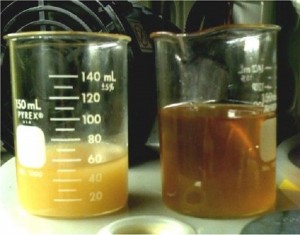“Two microbes, a bacteria, and a yeast” may sound like a recipe for a bad science joke, but it’s actually the formula that’s led researchers from Lawrence Berkeley National Laboratory and the Department of Energy to produce a new source for biodiesel.
Working together under the umbrella of the DOE’s Joint BioEnergy Institute (JBEI), a team of researchers have successfully engineered bisabolane into a biosynthetic alternative for making diesel.
There’s a good reason the scientists involved in the project stand like a proud group of superheroes in their most recent lab photo (see above). The potential biofuel source they’ve developed is something quite distinct.

 Follow
Follow




